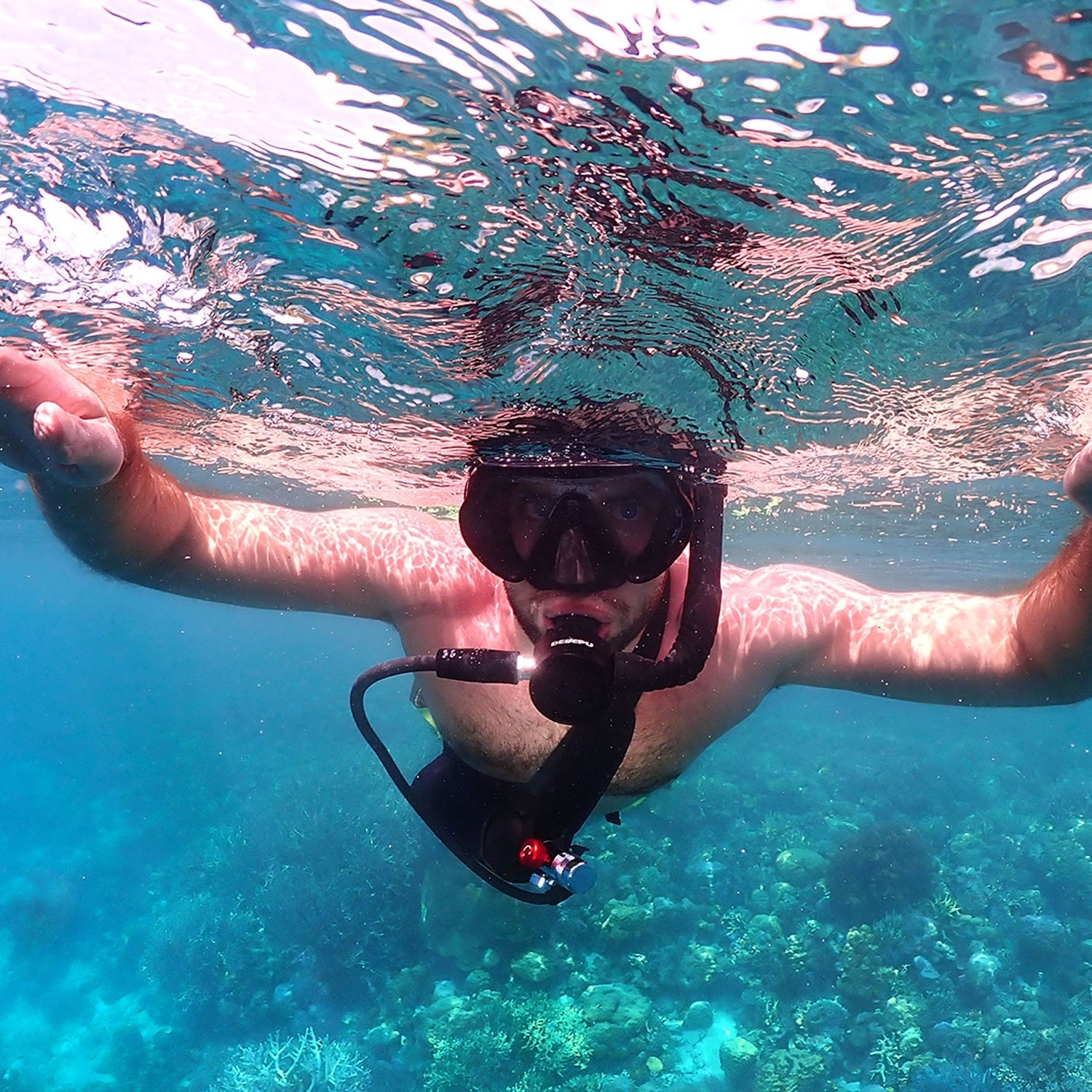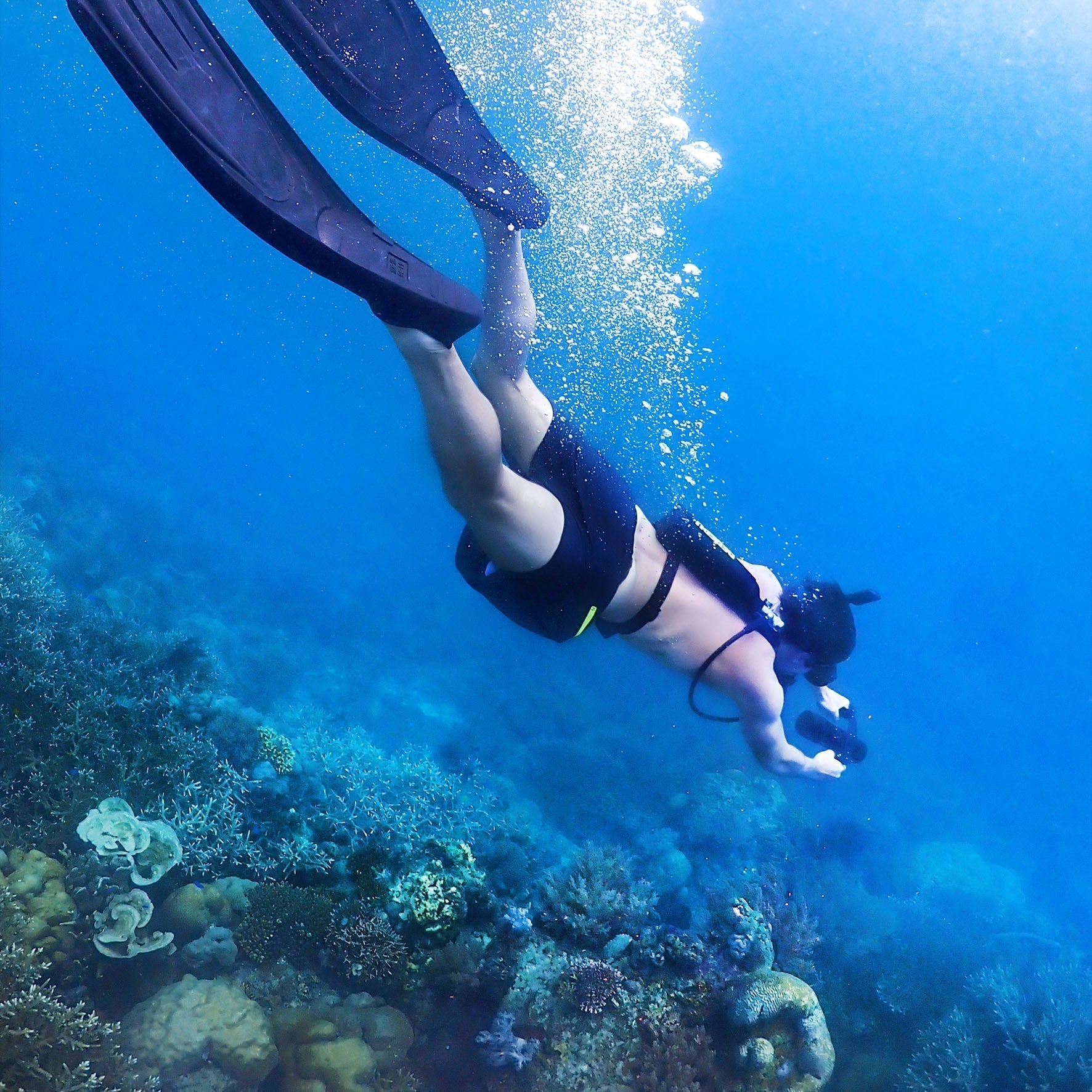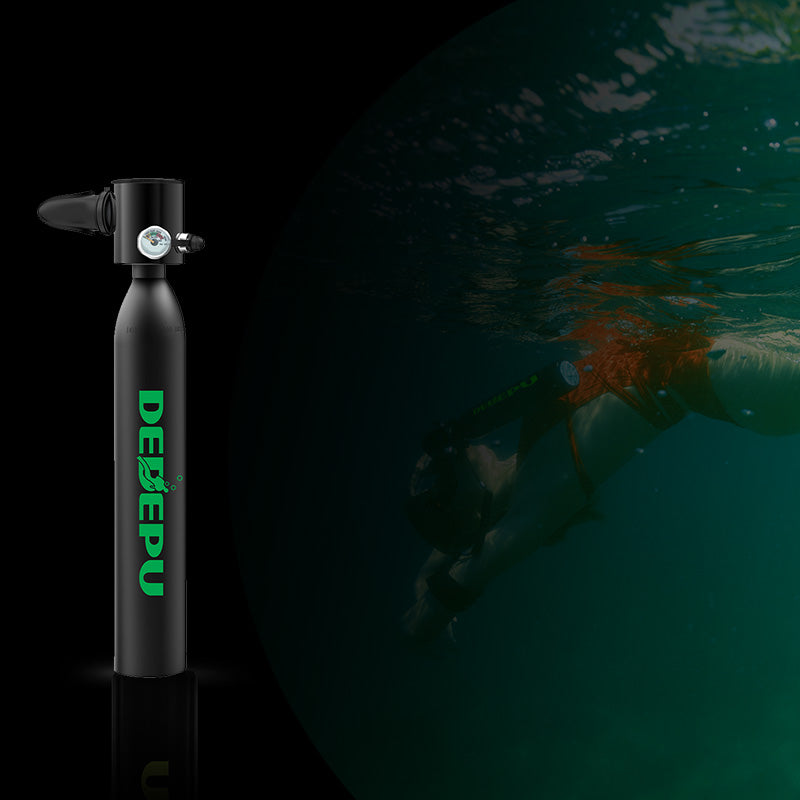Mini scuba tanks, also known as portable dive systems, are popular for shallow-water diving, snorkeling, and emergency use. Unlike traditional scuba gear, these compact tanks typically hold 1 to 3 cubic feet of air and last 5 to 15 minutes underwater. While full scuba certification (like PADI or SSI) is required for standard tanks, many mini scuba tanks don’t legally require certification—but safety knowledge is still crucial. For example, breathing compressed air below 10 feet without training can be dangerous due to pressure risks.
What Is a Mini Scuba Tank?
A mini scuba tank, also called a pony bottle or spare air system, is a compact, lightweight air supply used for short dives, emergency backup, or snorkeling. Unlike full-sized scuba tanks (which hold 80-120 cubic feet of air), mini tanks typically store 1.7 to 6 cubic feet—enough for 5 to 15 minutes at shallow depths (under 20 feet). They weigh 2 to 5 pounds, making them 50-80% lighter than standard scuba cylinders.
These tanks are popular among freedivers, snorkelers, and emergency responders because they don’t require bulky regulators—most use a simple direct-demand valve that delivers air at 1-2 liters per breath. Prices range from 150 to 500, depending on capacity and material (aluminum or carbon fiber). While they’re not a replacement for certified scuba gear, they’re useful for quick underwater tasks, safety backups, or casual exploration in 3-10 feet of water.
How It Works
Mini scuba tanks operate on compressed air (2000-3000 PSI) and release air only when the diver inhales. A basic model delivers 0.5 to 1.5 liters per breath, with a total air supply lasting 5-15 minutes for an average adult (breathing 15-20 times per minute). Unlike full scuba regulators, most mini tanks lack buoyancy control or pressure gauges, so users must monitor their air manually.
Common Uses
Snorkeling Backup – Provides 3-5 extra minutes of air if a snorkeler gets tired or needs to descend briefly.
Shallow-Water Tasks – Used by pool cleaners, photographers, and spearfishers for quick dives under 10 feet.
Emergency Safety Gear – Some boaters and divers carry them as a last-resort air source (though they’re not a substitute for proper training).
Training & Practice – New divers sometimes use mini tanks in confined water drills before moving to full scuba setups.
While convenient, mini tanks have strict depth limits—most are unsafe below 20 feet due to rapid air consumption and lack of decompression control. For deeper dives, a certified scuba system (with proper training) is still the only safe option.

Certification Rules for Scuba Diving
92% of dive operators worldwide require proof of certification before renting gear or allowing open-water dives. The most recognized agencies (PADI, SSI, NAUI) mandate 12-15 hours of training, split between classroom, pool sessions, and open-water dives. The average course costs 350-600, depending on location and inclusions (e.g., gear rental or boat fees).
Certification covers critical safety protocols: managing air consumption (most divers use 25-30 liters per minute at rest, 60+ liters when stressed), equalizing ear pressure (needed every 2-3 feet of descent), and emergency ascents (limited to 30 feet per minute to avoid lung injuries). Without this training, the risk of barotrauma (pressure-related injuries) increases by 40%, and drowning probability triples in depths over 30 feet.
Standard Certification Levels
Open Water Diver (Beginner)
Minimum age: 10-12 years (varies by agency).
Depth limit: 60 feet (18 meters).
Requirements: 5 pool dives, 4 open-water dives, and a written exam (passing score: 75% or higher).
Advanced Open Water (Intermediate)
Depth limit: 100 feet (30 meters).
Includes: Navigation training (+/- 3% accuracy required) and deep-dive practice (simulating low-light, high-pressure conditions below 60 feet).
Rescue Diver (Safety Focus)
Teaches emergency response:
Air-sharing drills (must switch regulators in under 5 seconds).
Towing a panicked diver (50-100 feet at 1-2 knots speed).
Gear-Specific Training
Full-size tanks: Require understanding of PSI ratings (standard tanks hold 3000 PSI, depleting at 20-40 PSI per minute during moderate activity).
Regulators: Must deliver 1.4-1.6 cubic feet of air per breath at 33 feet (10 meters).
Buoyancy Control Devices (BCDs): Certified divers learn to adjust buoyancy within ±2 pounds for neutral floating.
Cost Breakdown
Study materials: 50-150 (eBooks, videos, or physical manuals).
Pool sessions: 80-200 (typically 4-6 hours total).
Open-water dives: 200-400 (includes boat fees and instructor time).
Why Certification Matters
Insurance: Most policies void coverage for uncertified divers.
Dive computers: Lock out users exceeding their certification depth (e.g., an Open Water diver can’t set a computer below 60 feet).
Air refills: Dive shops require certification to refill tanks (compressed air costs 5-15 per fill).
Key Takeaway: While mini scuba tanks often bypass certification rules, traditional gear demands proof of training—not just for legality, but because 80% of diving fatalities involve protocol violations like exceeding depth limits or ignoring air supply warnings.
Mini Scuba Tank vs. Full Scuba Gear
A standard aluminum-80 scuba tank holds 80 cubic feet of air (enough for 45-60 minutes at 30 feet), while a mini tank carries just 1.7-6 cubic feet (lasting 5-15 minutes). The weight difference is drastic: full gear weighs 30-50 pounds (tank + regulator + BCD), while mini tanks clock in at 2-5 pounds.
Price-wise, entry-level full scuba setups cost 1,000-2,500, whereas mini tanks run 150-500. But the real divider is depth limits: certified scuba systems safely operate to 130 feet, while mini tanks become risky below 20 feet due to rapid air depletion and lack of buoyancy control.
1. Air Supply & Performance
| Metric | Mini Scuba Tank | Full Scuba Gear |
|---|---|---|
| Air Capacity | 1.7-6 cu ft (48-170 L) | 80-120 cu ft (2,265-3,400 L) |
| Duration | 5-15 min (shallow dive) | 45-90 min (30 ft depth) |
| Air Delivery | 0.5-1.5 L per breath | 1.4-1.6 L per breath (regulated) |
| Refill Cost | 3-8 per fill | 5-15 per fill |
Key Insight: Mini tanks lose air 3-5x faster at just 10 feet because they lack pressure-compensating regulators.
2. Safety Features
Buoyancy Control:
Full gear has adjustable BCDs (±10 lbs of lift).
Mini tanks: none—divers must rely on swimming or weight belts.
Pressure Monitoring:
Full setups include submersible gauges (accurate to ±5%).
Most mini tanks have no gauge, forcing users to estimate air time.
Emergency Options:
Certified divers can share air via secondary regulators (mandatory in training).
Mini tanks can’t share air—once empty, you surface immediately.
3. Depth & Usage Limits
Mini Tanks:
Max safe depth: 20 feet (6 m).
Air lasts <10 minutes at 15 ft due to 2x faster consumption.
Full Scuba:
Recreational limit: 60-130 feet (18-40 m).
Technical diving variants support 200+ feet (with mixed gas).
4. Who Should Use Which?
Mini Tanks Work For:
Snorkelers needing <5 min underwater (reef photos, quick retrievals).
Pool maintenance (cleaning at 6-8 ft for 10-12 min sessions).
Emergency backup (kept on boats for surface-breathing emergencies).
Full Scuba Required For:
Dives below 20 feet.
Multi-level diving (ascending/descending with 3-5 min safety stops).
Low-visibility conditions (where air monitoring is critical).
5. Maintenance Differences
| Task | Mini Tank | Full Scuba |
|---|---|---|
| O-Ring Checks | Every 3 months | Every 6-12 months (professional service) |
| Hydro Testing | Not required (low pressure) | Mandatory every 5 years (3,000 PSI tanks) |
| Regulator Service | N/A (fixed valve) | Annual servicing (80-150) |
Bottom Line: Mini tanks are affordable and portable but lack the air supply and safety systems for real diving. Full scuba gear costs 5-10x more but provides controlled buoyancy, air sharing, and deeper access—which is why certification is mandatory.
Pro Tip: If you’re just snorkeling in <15 ft, a mini tank can help—but for anything deeper, rent certified gear and get trained. The risk isn’t worth the $300 savings.
Do You Need a Certification?
No—but with major caveats. Unlike traditional scuba gear (which requires PADI/SSI certification in 92% of dive shops), mini scuba tanks operate in a legal gray area. Most manufacturers label them as "emergency air supplies" or "snorkeling aids", skirting dive certification laws. However, 35% of U.S. states and 60% of Caribbean nations classify any compressed-air breathing device as "scuba equipment," requiring certification for commercial use.
Safety-wise, mini tanks carry 3x the risk of barotrauma (lung injuries) compared to snorkeling when used below 10 feet, primarily because untrained users forget to exhale during ascent. A 2023 dive industry report found 72% of mini-tank incidents involved people who ignored depth limits (typically 15-25 feet), where air consumption spikes to 40+ liters per minute—emptying a 3-cu-ft tank in under 4 minutes.
1. Legal Requirements by Region
| Location | Mini Tank Classification | Certification Needed? | Penalty for Violation |
|---|---|---|---|
| USA (Federal) | "Recreational snorkel device" | No | N/A |
| Florida | "Alternative air supply" | Yes (if rented/sold commercially) | $500 fine |
| Bahamas | "SCUBA apparatus" | Yes (all compressed air) | Gear confiscation + $1K fine |
| Australia | "Dive equipment" | Yes (below 10 ft) | $2,000 AUD fine |
Key Detail: Even where legal, 85% of boat operators ban uncertified divers from using mini tanks on group trips—their insurance won’t cover air-related accidents.
2. Safety Risks Without Training
Air Management:
At 10 feet, an average adult breathes 25 liters/minute (vs. 8 L/min snorkeling).
A 3-cu-ft (85L) tank lasts 3.4 minutes at this rate—but panic can double consumption.
Pressure Hazards:
Ascending at >1 ft/sec from just 15 feet risks lung overexpansion (a 22% chance if holding breath).
Mini tanks lack burst discs (standard on full scuba tanks), raising rupture risk at 3,000+ PSI.
No Redundancy:
Full scuba gear has backup regulators (second-stage) and octopus valves; mini tanks have neither.
3. When Certification Is Recommended
Even if not legally required, get certified if you:
Use the mini tank below 10 feet (PADI Skin Diver course covers this, $199).
Dive near boats (certification teaches surface marker buoy deployment, reducing boat-strike risk by 68%).
Travel to strict regions (e.g., Cayman Islands verify certs for all air fills).
4. Insurance & Liability
Personal Insurance:
0% of standard travel policies cover mini-tank accidents unless certified.
Dive-specific insurance (e.g., DAN) costs $125/year but requires proof of training.
Rental Shops:
Those renting mini tanks face 300% higher liability premiums vs. snorkel gear.
5. Smart Workarounds
If avoiding certification:
Stick to <6 ft depths (pool cleaning, shallow snorkeling).
Use pre-filled tanks (avoids illegal air fills; lasts 5-8 min at 3 ft).
Pair with a floating dive flag ($25) to alert boats—reduces collision risk by 55%.
Pro Tip: Call local dive shops before traveling—40% will rent mini tanks uncertified if you sign a waiver, but always check local laws first.

Best Practices for Safe Use
Mini scuba tanks may not require certification, but 72% of reported incidents involve users who ignored basic safety rules. At just 10 feet deep, air consumption jumps to 30 liters per minute—emptying a standard 3-cu-ft tank in under 4 minutes if you panic. Studies show that 55% of mini-tank emergencies occur because people overestimate their air supply or dive too deep (beyond 15 feet).
To avoid becoming a statistic:
Always pre-dive check tank pressure (should read 2000-3000 PSI).
Never exceed 1-minute dives per 1 cu-ft of air (e.g., 3 minutes max for a 3-cu-ft tank).
Stay shallower than 10 feet—every extra foot cuts your air time by 12%.
1. Pre-Dive Safety Checks
| Checkpoint | Why It Matters | Red Flag |
|---|---|---|
| Tank Pressure | Below 1500 PSI? Only 45% of air left. | <1000 PSI = Refill immediately |
| O-Ring Condition | Cracked seals leak 5-10 PSI per minute. | Visible wear or corrosion |
| Valve Function | Stiff turns mean 80% higher failure risk. | Takes >2 seconds to open/close |
Pro Tip: Spray soapy water on connections—bubbles mean leaks wasting 20+ PSI per minute.
2. Depth & Time Management
Air Duration Formula:
Safe Dive Time (minutes) = (Tank Size in cu-ft) ÷ (Depth in ft ÷ 10 + 1)
Example: 3-cu-ft tank at 10 ft = 3 ÷ (10/10 + 1) = 1.5 minutes (not the full 3!).
Critical Thresholds:
5 ft: 1 cu-ft lasts 8-10 minutes (ideal for beginners).
15 ft: Same air lasts just 2 minutes (high-risk zone).
3. Breathing Techniques
Normal Snorkeling: 8-12 breaths/minute (0.5L each).
Mini Tank Diving: Must slow to 6-8 breaths/minute (1L each) to extend air.
Panic Mode: Breaths spike to 25+/minute, draining a 3-cu-ft tank in 90 seconds.
Drill: Practice "1-second inhale, 4-second exhale" on land first—boosts efficiency by 40%.
4. Buddy System Upgrades
Even without certification:
Hand Signals: Agree on "low air" (flat hand waved at throat) and "ascend now" (thumbs up).
Surface Protocol: Always have a spotter watching for distress (cuts drowning risk by 65%).
Backup Air: Keep a second mini tank on the boat—swapping takes <10 seconds vs. emergency ascent.
5. Post-Dive Maintenance
Rinse Tank: Saltwater corrosion reduces tank lifespan by 50% if not rinsed within 2 hours.
Storage Pressure: Keep 500-1000 PSI in the tank—empty tanks invite moisture, causing $200+ valve damage.
Annual Inspection: Pay a pro $50 to check hydrostatic integrity (even if not legally required).




Leave a comment
All comments are moderated before being published.
This site is protected by hCaptcha and the hCaptcha Privacy Policy and Terms of Service apply.